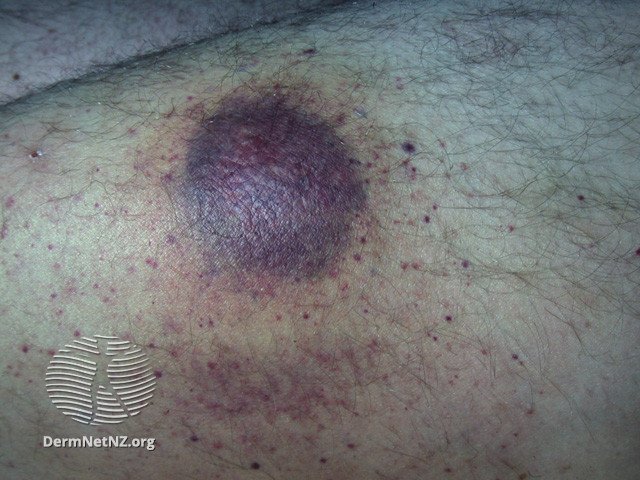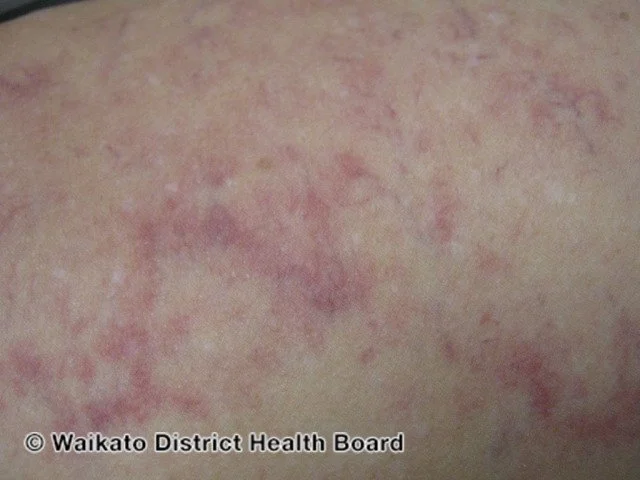
Cutaneous B-cell Lymphoma (CBCL)
Cutaneous B-Cell Lymphoma often presents as violaceous nodules on the head and neck.
Credit: DermNet NZ
What is primary cutaneous B-cell lymphoma?
Primary Cutaneous B-Cell Lymphoma (PCBCL) is a specific type of skin cancer arising from B-cells, essential components of the immune system. Unlike other forms of lymphoma that may affect various body parts, PCBCL predominantly impacts the skin. While many PCBCL variants exhibit indolent behavior, a few can become aggressive, potentially affecting areas beyond the skin.
What causes primary cutaneous B-cell lymphoma?
The precise cause of PCBCL remains largely unidentified, but it is believed to stem from mutations in the white blood cells. A higher prevalence of the condition has been observed in older individuals. Additionally, certain bacterial infections have been linked to the development of PCBCL.
What are the symptoms of primary cutaneous B-cell lymphoma?
The primary manifestation of PCBCL is the appearance of skin growths or nodules. These nodules, often rapidly growing, can vary in color from pink to purple. While they predominantly appear on the upper body, they can manifest anywhere on the skin. Apart from these skin changes, many patients do not exhibit any other symptoms.
How do I treat primary cutaneous B-cell lymphoma?
The treatment approach for PCBCL is contingent on its specific type. A comprehensive evaluation, including blood tests and a PET scan, is crucial to ensure the lymphoma hasn't spread internally. Once localized to the skin, a variety of treatments might be recommended. These can range from skin-directed therapies, including topical treatments and injections, to more extensive treatments like systemic therapies and radiation.
CBCL can show up as a dark purple, bruise-like nodule.
Credit: DermNet NZ
Intravascular Cutaneous B-Cell Lymphoma can develop in the superficial blood vessels under the skin.
Credit: DermNet NZ



